This post may contain affiliate links. Please read my disclosure policy.
Whether you have a bunch of fresh herbs from the farmer’s market, your garden or the grocery store, we are sharing tips on how to preserve them in the freezer for use any time of the year! If you are looking for how to store fresh herbs in your refrigerator, see this post.
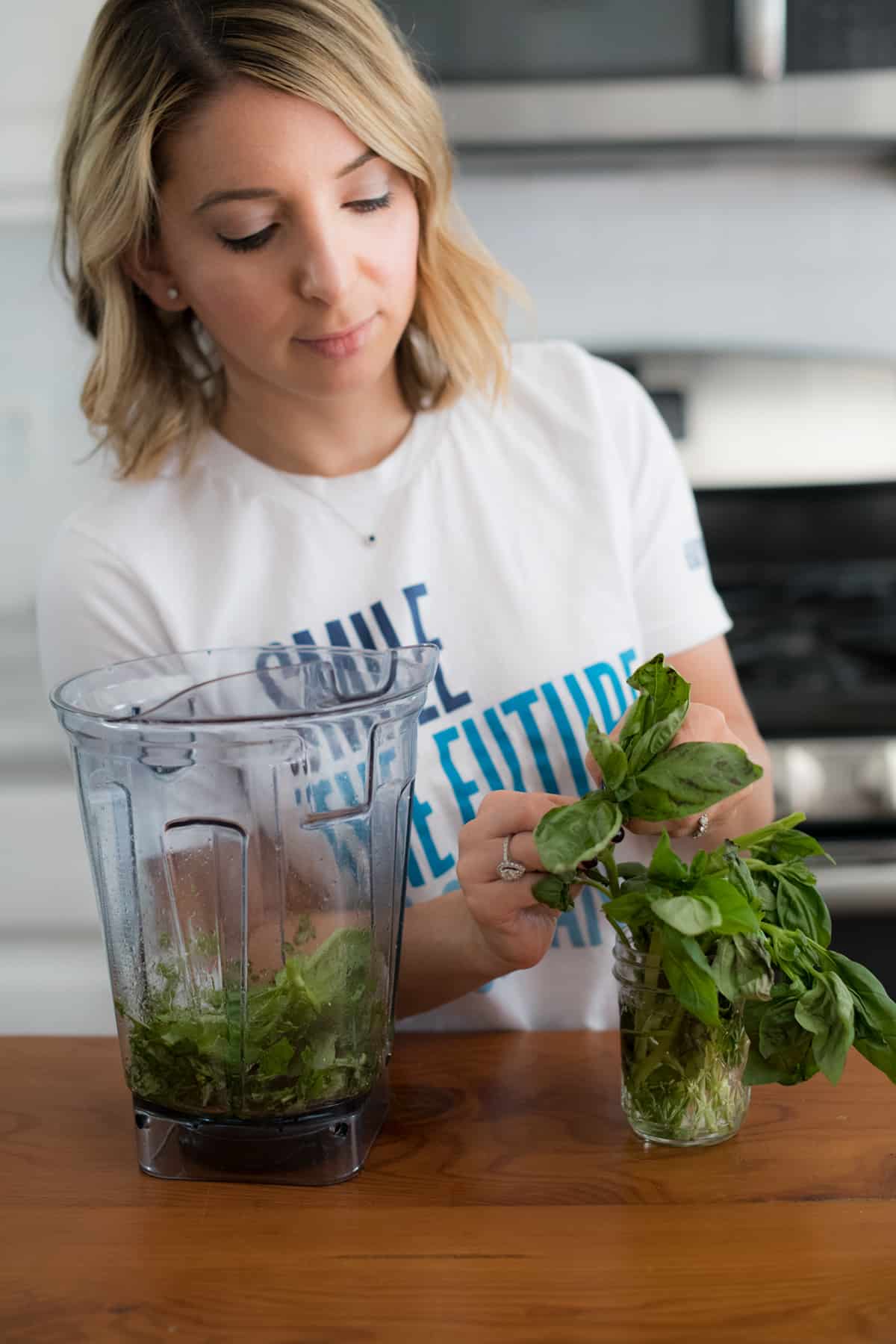 Preserving Fresh Herbs in Your Freezer
Preserving Fresh Herbs in Your Freezer
Using fresh herbs is a great way to brighten any dish and bring it from just ok to really delicious! But sometimes a little goes a long way with fresh herbs and you can be left with an entire bunch leftover from one recipe. Or you have an overabundance of herbs from your summer CSA or your backyard garden and want to preserve the freshness all year long. Fear not there are TONS of ways you can preserve fresh herbs so you don’t have to waste any. We’re telling you all about the ways we’ve been successful preserving fresh herbs in the freezer. If you are looking for ways to store herbs fresh in the refrigerator, check out this post here.
There isn’t one hard and fast rule about preserving herbs, so we’re going to walk you through all of our favorite ways to store each particular herb that is good to freeze!
Can you freeze fresh herbs?
Absolutely yes. We’re talking about three main ways to store fresh herbs in the freezer for preservation today.
- Storing whole herbs in the freezer.
- Storing herbs submerged in water, stock or oil in the freezer in ice cube trays or jars.
- Storing pureed herbs in the freezer.
Not all herbs are equally freeze well, though. Depending on the type of herb will determine how it is best to freeze it. Soft herbs, like parsley, cilantro and dill have to be slightly processed before being able to be frozen. Others, like sage and rosemary can be frozen just as is because they are more hearty. If you don’t see an herb on this list, such as mint, it’s because we do not recommend freezing.
The Best Way to Clean Herbs
Herbs can be very dirty and gritty, whether coming from the supermarket or the farmer’s market. The best way to clean herbs is to fill up a big bowl with clean, cool water. Dunk the herbs in the water, letting all the dirt and grit sink to the bottom a few times. Empty the water, fill it back up and repeat until no sand or dirt remains at the bottom of the bowl.
It is best to dry herbs in a salad spinner. If you do not have that you can let the herbs dry in a clean kitchen towel, taking off as much water as possible, especially if you are storing the herbs in oil.
Storing Whole Herbs
Some herbs are great candidates to store in the freezer whole. To prepare them for freezing follow the steps below. Most important you want to remove as much air as possible from the storage containers, so plastic bags are a good choice here for storing whole herbs. You can use a straw to suck as much air out of the bag as possible before closing. But we preferred using glass jars to store herbs that are best cut before freezing.
Rosemary: Wash and dry the leaves / stems very well. Place in a plastic bag with as much air removed as possible and store in the freezer for up to 6 months.
Thyme: Wash and dry the leaves / stems very well and then pick off the leaves. Sometimes picking off all of the leaves can be tedious and difficult if the stem is soft. It’s okay to have some bits of stem in there, so long as it is soft as this contains lots of flavor. You can chop it small if you want. However, make sure you discard any woody pieces of stem as they don’t taste good! Store in a plastic bag or airtight container in the freezer for up to 6 months.
Chives: Wash and dry and slice. Store in a airtight container or plastic bag or with as much air removed as possible and store in the freezer for up to 6 months.
Lemongrass: Wash and dry and remove the outer layer, then slice. Store in a airtight container or plastic bag or with as much air removed as possible and store in the freezer for up to 6 months.
Storing Chopped Soft Herbs in Water or Oil
Soft herbs cannot be stored whole without some processing in the freezer. The herbs are washed, chopped how you would like it to be used and then submerged in either oil, water or broth. Small portions can be stored in ice cube trays, small mason jars or bags. Freeze in small quantities so you can easily take out a small amount that you’ll need in a specific dish.
Oil preserves the herbs the best because it’s air tight and prevents discoloration, plus then the oil is infused with the herb flavor. BUT you won’t always need the oil in the recipes you’ll be using the fresh herbs for. You can alternatively use water or broth to store the herbs in.
Parsley: Wash and dry the parsley and pick off the leaves. Rough chop parsley and freeze in ice cube trays or other small containers and submerge with either water, broth or oil.
Cilantro: Wash and dry the cilantro and pick off the leaves. Rough chop cilantro and freeze in ice cube trays or other small containers and submerge with either water, broth or oil.
Basil: Wash and dry the basil and pick off the leaves. Rough chop basil and freeze in ice cube trays or other small containers and submerge with either water, broth or oil.
Sage: Wash and dry the sage and pick off the leaves. Rough chop sage and freeze in ice cube trays or other small containers and submerge with either water, broth or oil.
Storing Pureed Herbs in the Freezer
Our favorite method for storing herbs is to make a simple puree with olive oil and storing in the freezer. Delicate herbs like basil, dill and cilantro are best preserved this way. We’ve included a recipe for a simple pesto below but really any combination of herbs with a touch of olive oil and some seasoning will brighten up any future dish. We recommend adding an extra splash of olive oil to the surface of the herbs to help preserve them longer, since oil creates an air tight seal. You could also use broth and stock as well.
When making a puree you do not always need to take all of the stem off. There is a lot of flavor in the stem so often times we will leave portions of the stem in and not be as careful with taking off individual leaves. This is only true though for soft herbs like basil, parsley, dill and cilantro. “Woody” stems from herbs like thyme, rosemary and sage are not edible.
Parsley: Clean the parsley. Pick the leaves from the stem or optionally leave some of stem in for more flavor. Puree with oil or water and (optionally with additional flavoring) and make parsley pesto.
Cilantro: Clean the cilantro. Pick the leaves from the stem or optionally leave some of stem in for more flavor. Puree with oil or water and (optionally with additional flavoring) and make cilantro pesto.
Dill: Clean the dill. Pick the fronds from the stem or optionally leave some of stem in for more flavor. Puree with oil, water or broth.
Basil: Clean the basil. Pick the leaves from the stem or optionally leave some of stem in for more flavor. Puree with oil, water or broth or make a pesto.
Sage: Clean the sage Pick the leaves from the stem (do not puree with stem). Puree with oil, water or broth or make a pesto.
Ways to use preserved herbs:
- in soups, stews or sauces
- With pasta, rice
- In a salad dressing
- In egg dishes (omelet or quich)
- As a sauce (think freezer pesto chicken)
- As a spread on sandwiches, pizza
- As a dip

How to Preserve Fresh Herbs in the Freezer
Ingredients
- 2 cups herbs
- ⅓ cup nuts or seeds pine nuts, almonds, pistachio, pumpkin seeds, sunflower seeds
- ⅓ cup grated Parmesan cheese optional
- ½ cup extra-virgin olive oil
- 2 teaspoons fresh lemon juice
- salt and pepper to taste
Instructions
- In a food processor or blender, combine herbs and nuts and process until finely chopped.
- Add the Parmesan, if adding, and pulse again.
- With the motor running, drizzle in the olive oil and lemon juice.
- Season to taste with salt and pepper.
- When storing, drizzle some extra olive oil on top of the pesto to create an air tight seal.
- Will keep in refrigerator about 1 week. Will keep in freezer about 3 months.
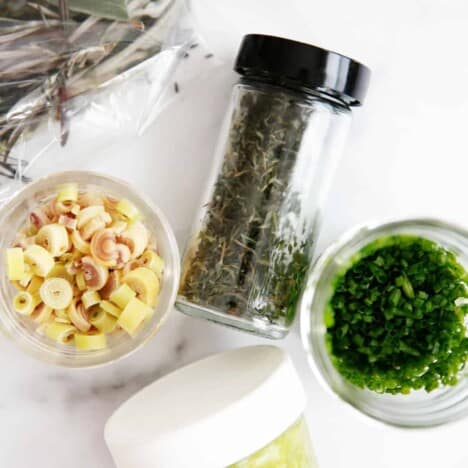
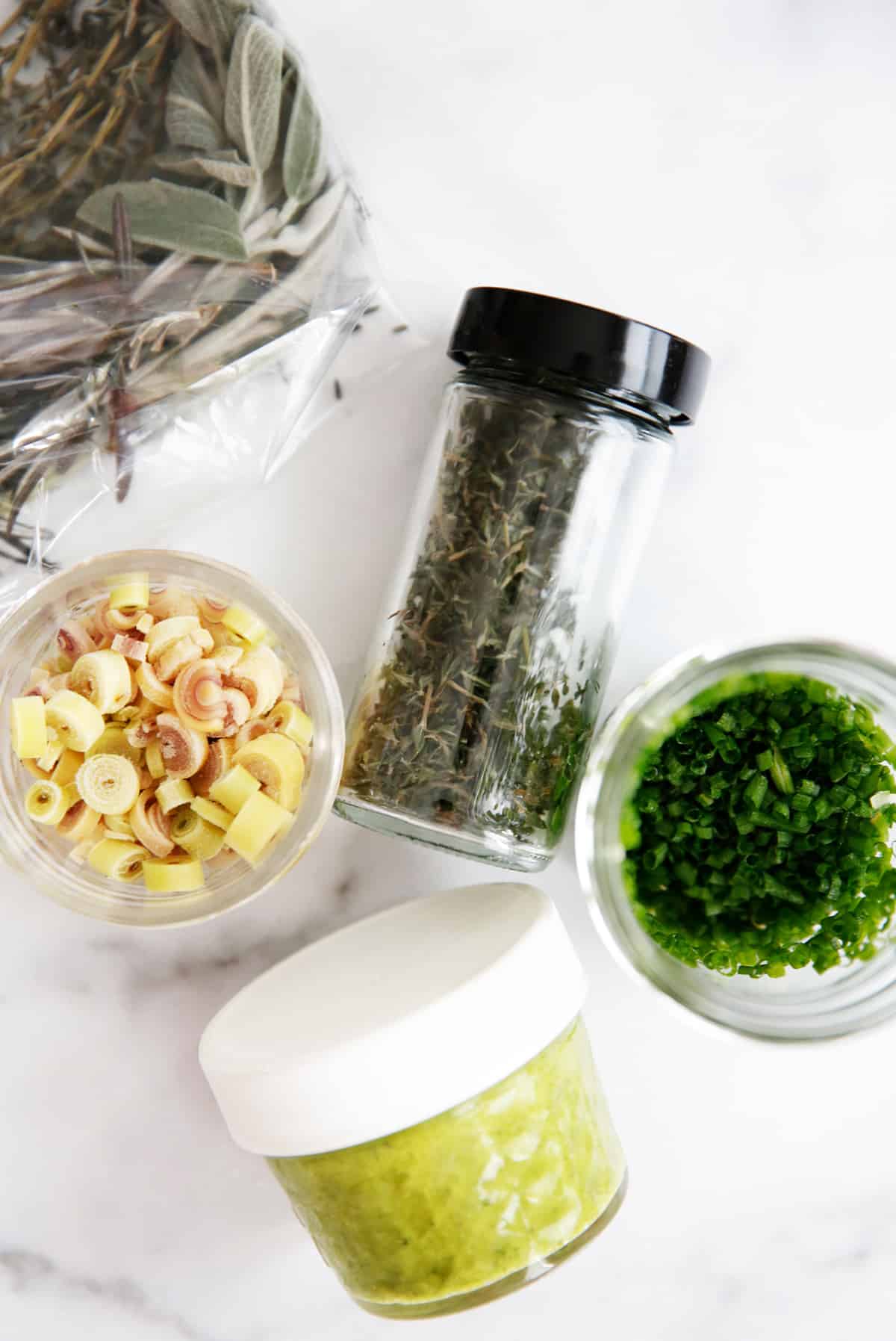
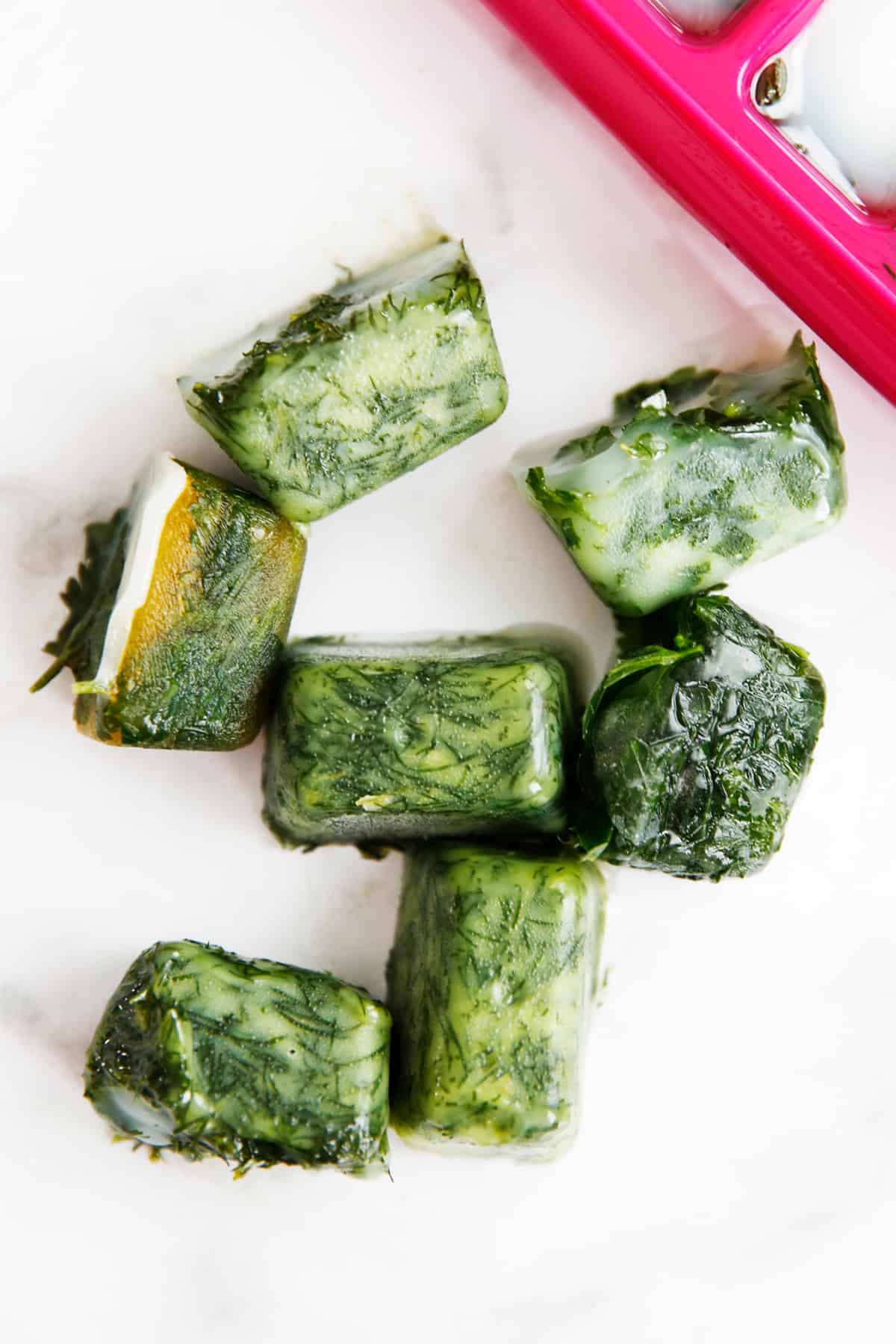
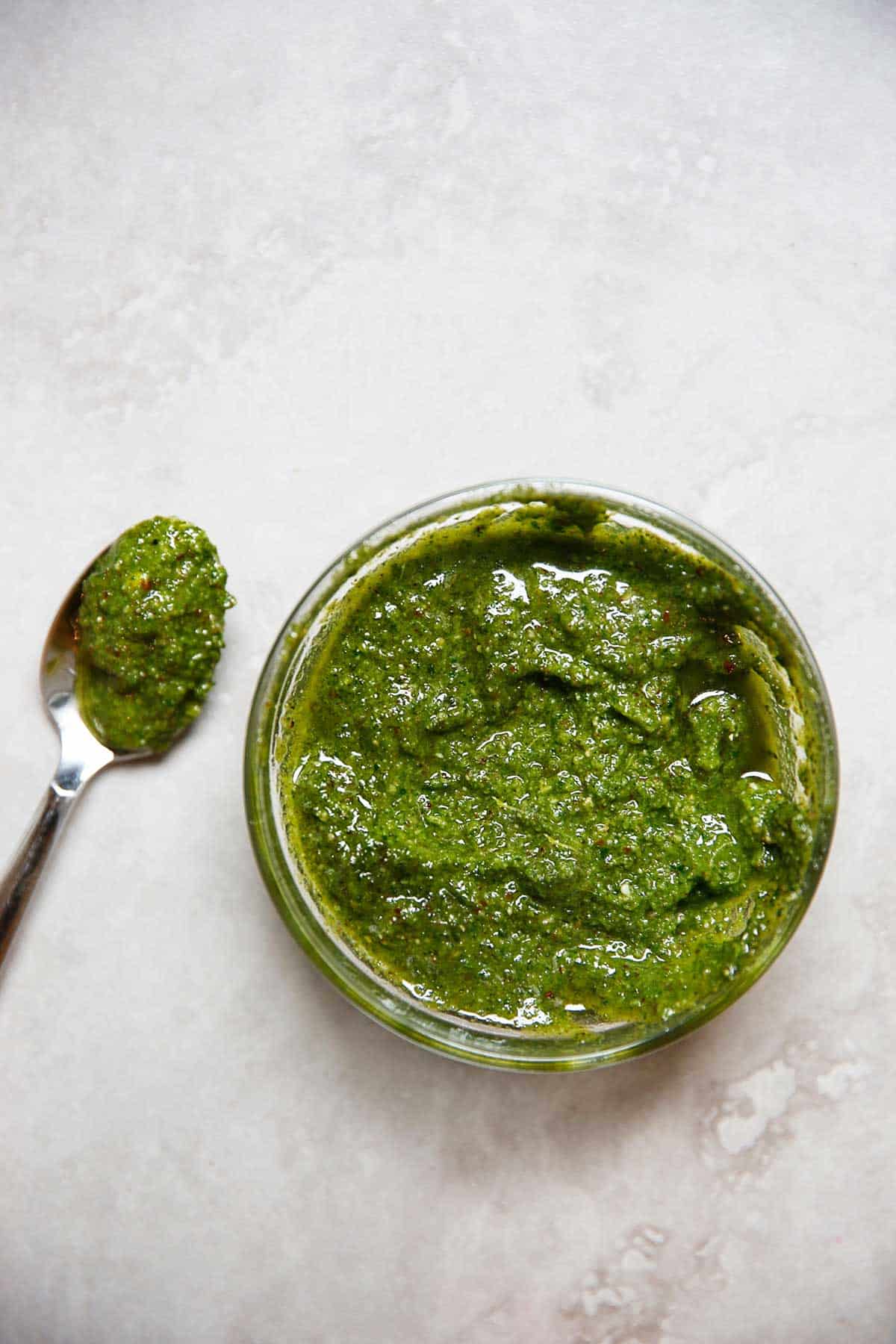




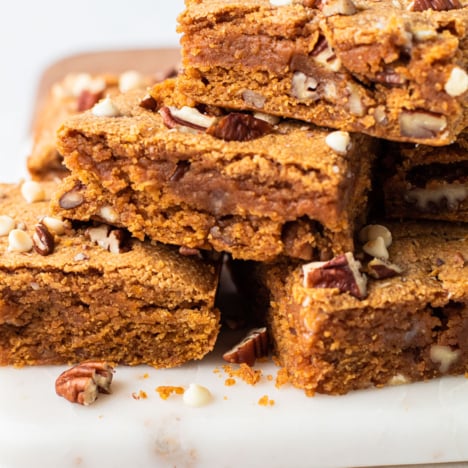

Thank you for so many great tips on how to preserve my leftover fresh herbs, Lexi! This has always been a dilemma, as I don’t always have room in my fridge to store them in my herb keeper. I am grateful for the simple little tip of drizzling oil on top to create an airtight seal. I’m wondering if brushing oil across a cut avocado might work the same way? I can wait to try out all of your suggestions! Thank you 😊